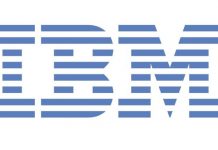ChronoBank have announced its public Beta release following the ChronoWallet and ChronoMint developing most of the features detailed in its whitepaper. It will be deployed to the upcoming Kovan testnet on Ethereum. The ChronoMint frontend will be distributed over the InterPlanetary File System and will be available on the ChronoBank site. beta.chronobank.io. Issues tracking and a bounty rewards program for the most active beta testers are to be detailed soon.
During beta development, one issue overcome was the Ropsten testnet used by ChronoMint being clogged with spam transactions. The next version of the Ethereum testnet, Kovan, has been announced by the Parity community. Although this new testnet is incompatible with geth nodes, it uses the Proof of Authority consensus, which should improve its resilience to spam attacks. ChronoBank has also made an application to become a trusted validator for the new testnet.
PoA is a replacement for PoW and can be used for both public and private chain setups. There is no mining involved to secure the network with PoA. Instead, it relies on trusted ‘Validators’ to ensure that legitimate transactions are added to blocks, and are processed and executed by the EVM faithfully.
Because mining does not occur on our proposed public testnet, malicious actors are prevented from acquiring testnet Ether - solving the spam attack that Ropsten currently faces. There is no difference in the way that contracts are executed on PoA and PoW chains, so developers can test their contracts and user interfaces before deploying to the mainnet in a more reliable and convenient environment. In addition it promises faster block times and reduced overall maintenance costs as no CPU-intensive mining is required.
The LaborX white paper has been stated to be finished, and an active project development has been started. The first commits in the LaborX github repository will be available from next week. Bounties are being offered to members of the community who have ideas and feedback about LaborX architecture. Additionally, the first issuance of LHAU - the Australian dollar Labour Hour token - will soon be made.
The company also announced that it will be switching from a feature-based versioning and release model to a continuous release model with a two-week, two-phase software cycle. The first phase is a one week merge period. In this week any stable Pull Requests will be accepted into the development branch. The second phase is a one week test/regression and release period where it will branch a new release/version, then test, patch or undo any PRs that are unstable. This will allow a process of continual deployment and incremental improvement for LaborX, whilst also allowing features to develop and mature before being included into the release version. The approach also allows the possibility to ‘roll back’ or regress certain changes, should they become problematic.











